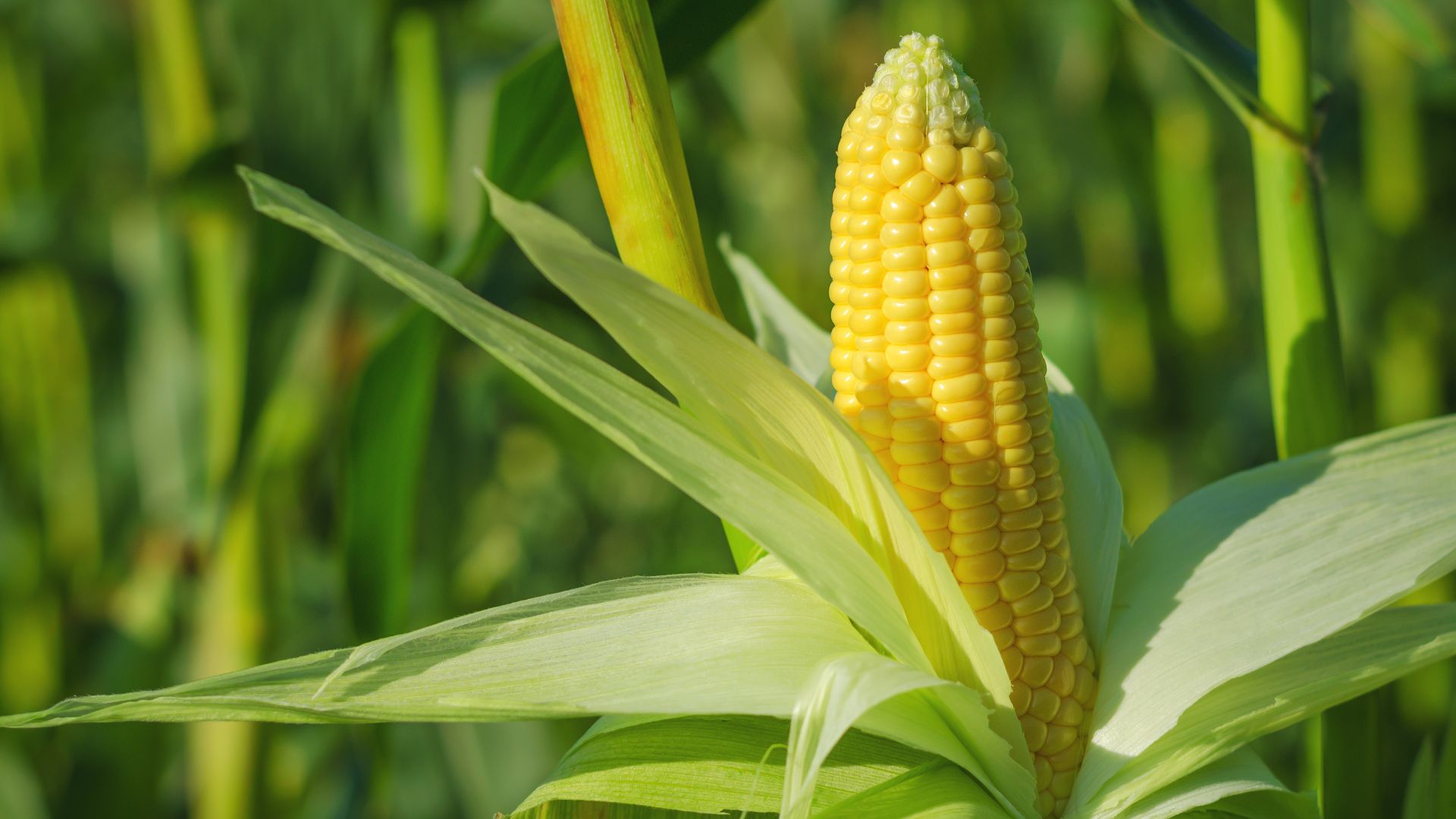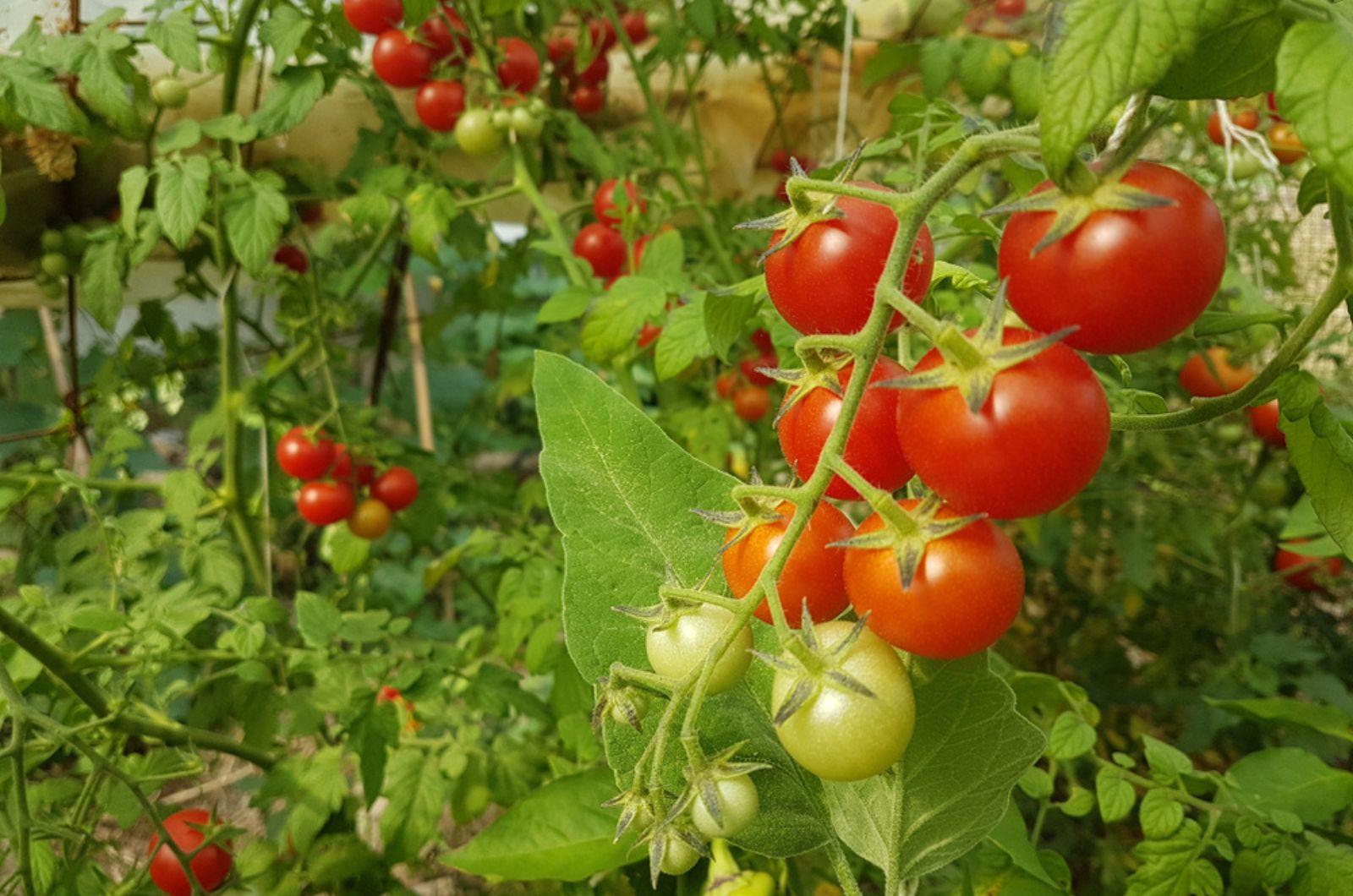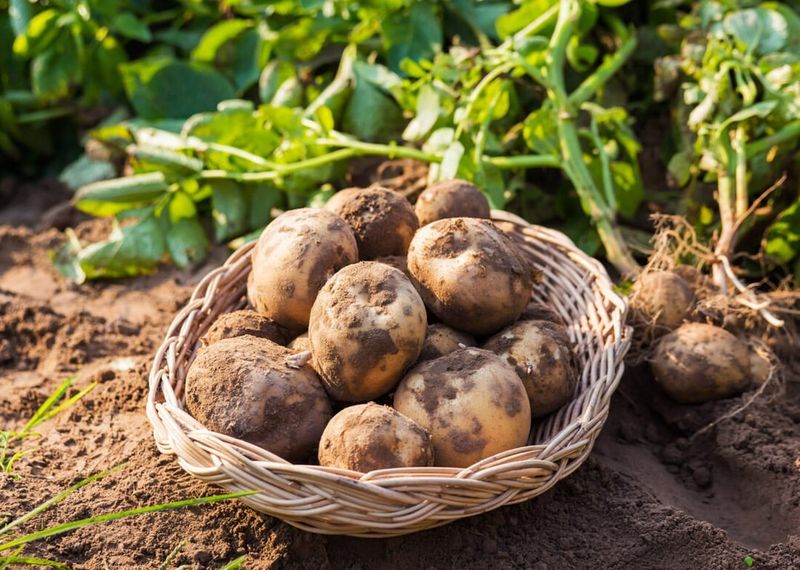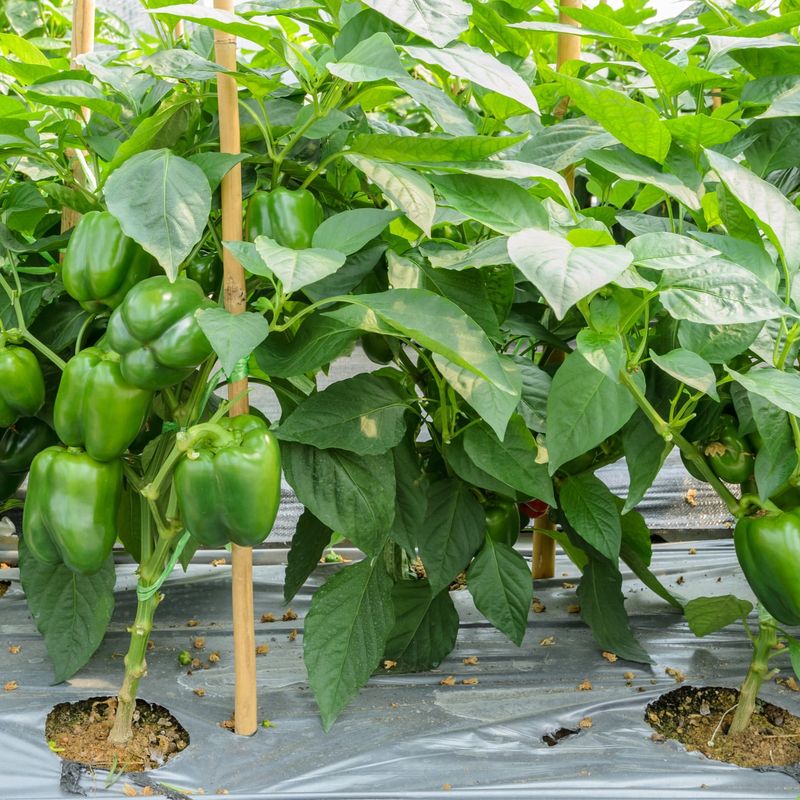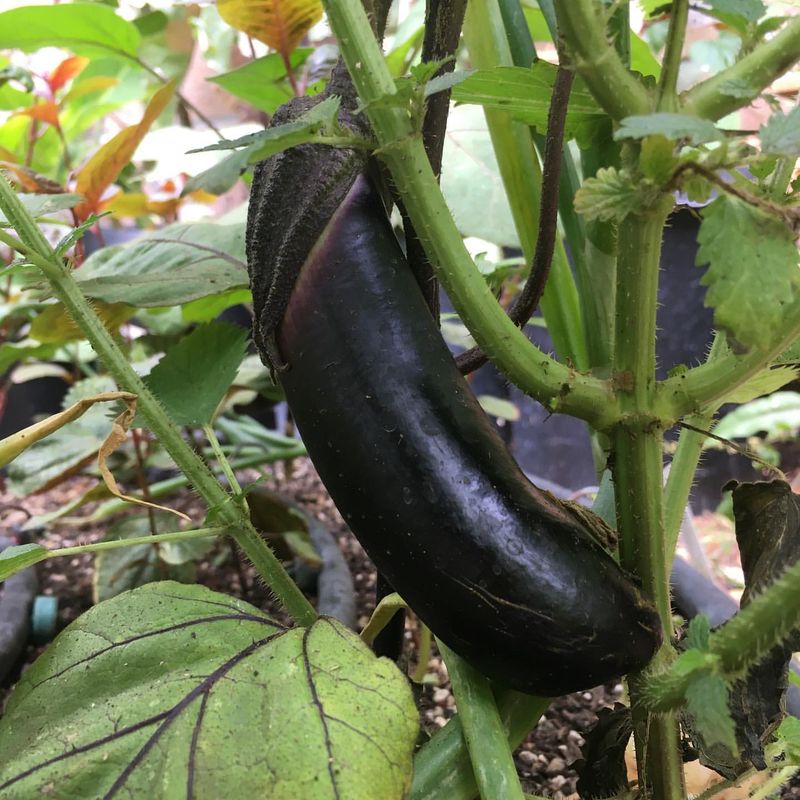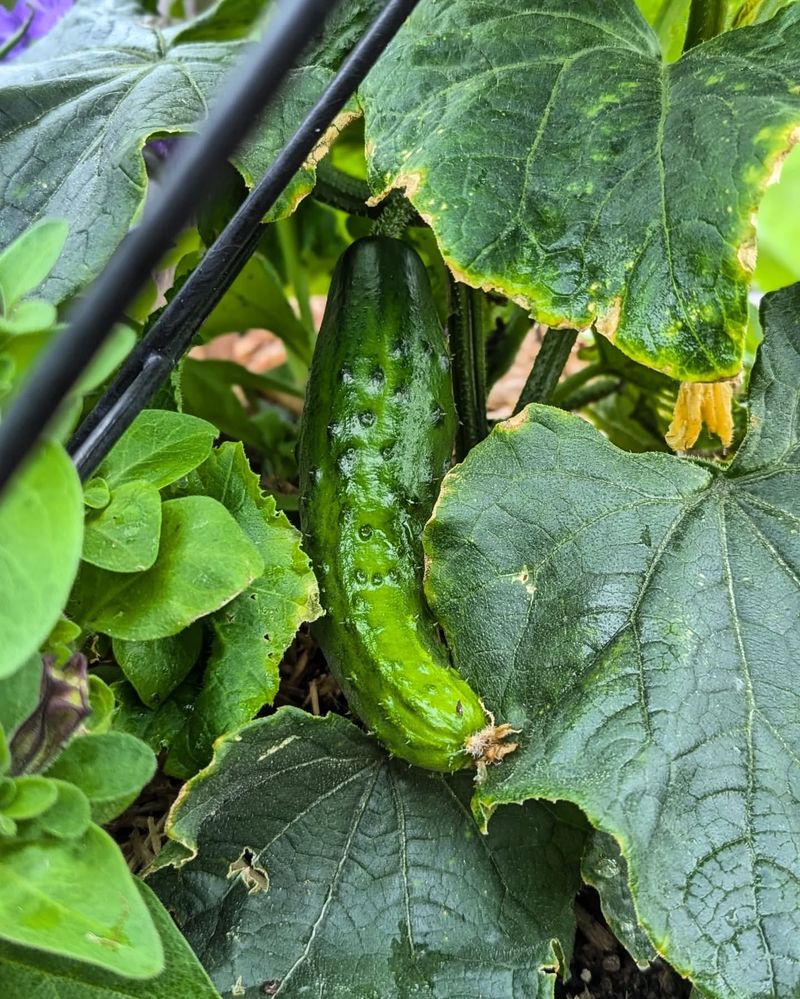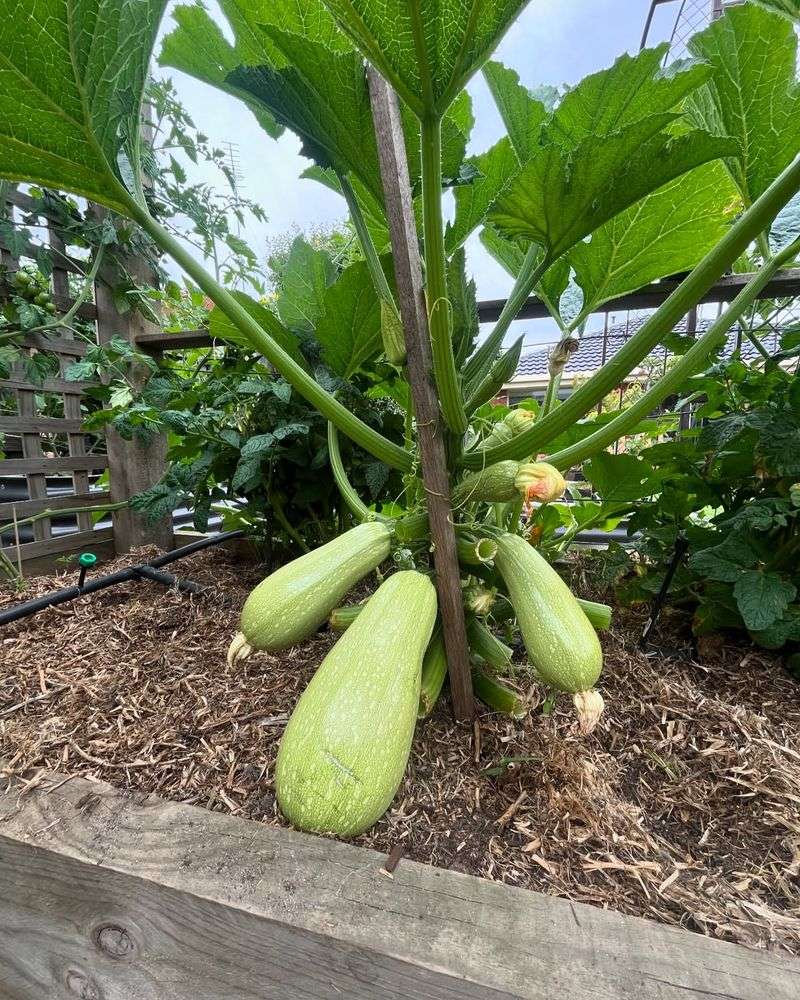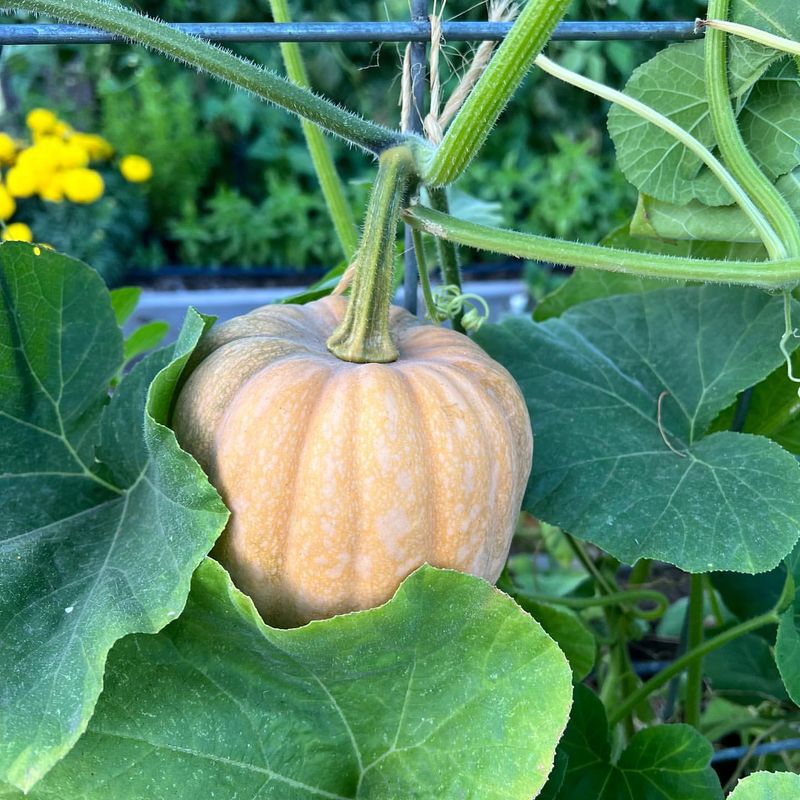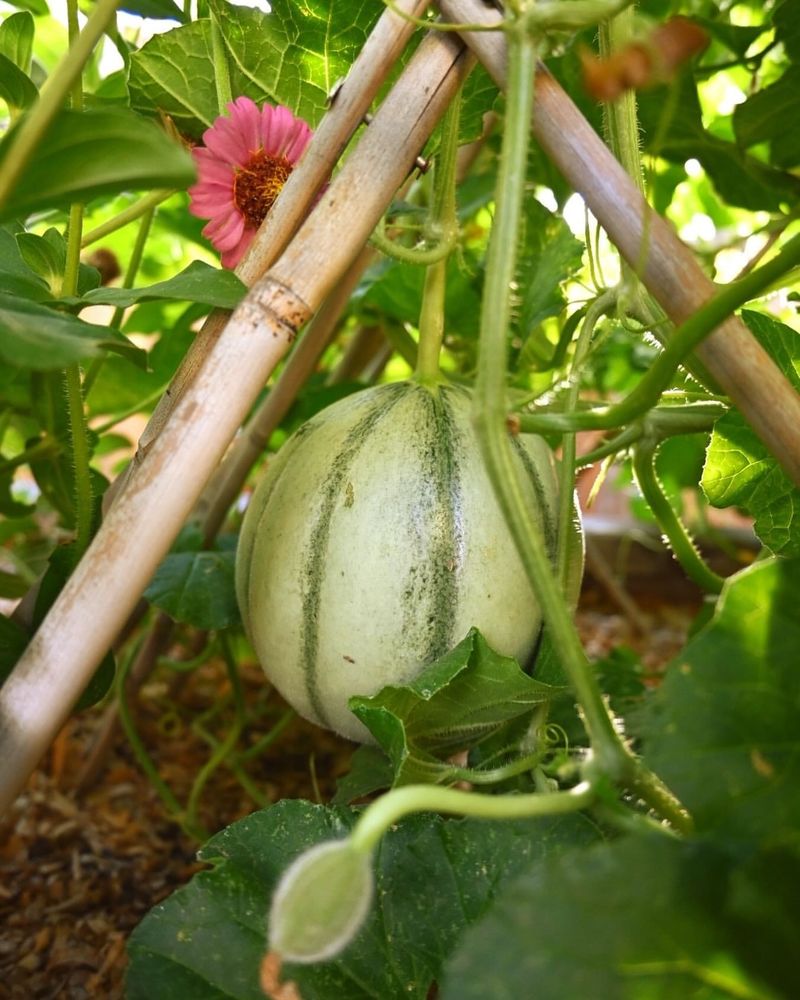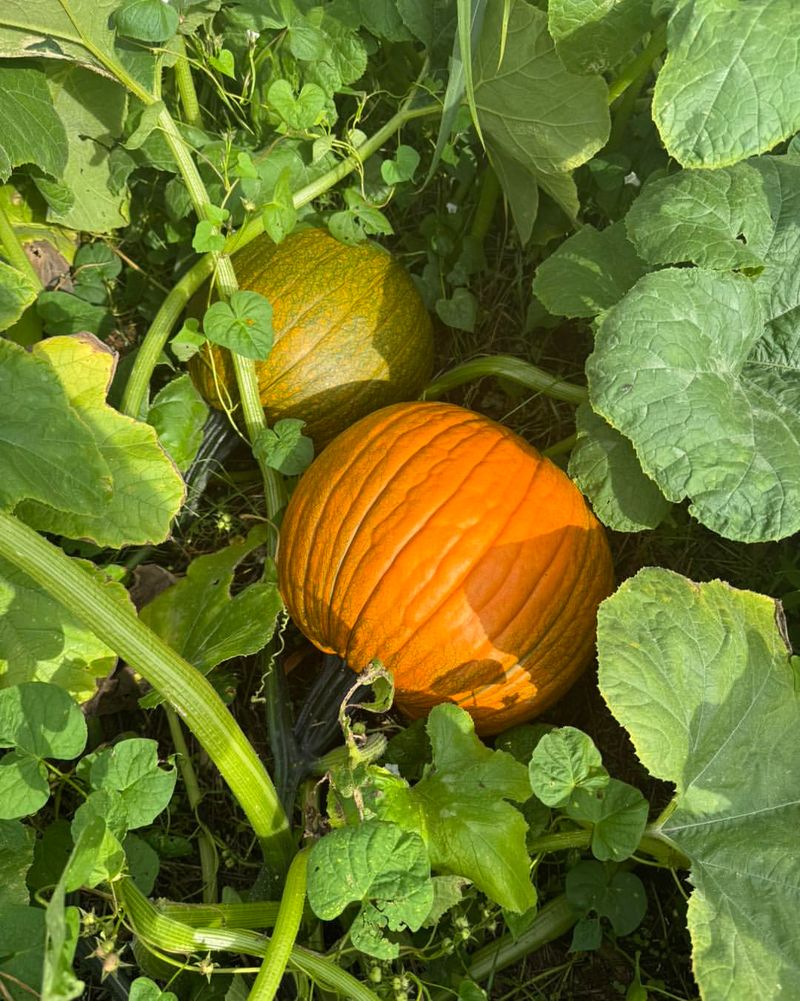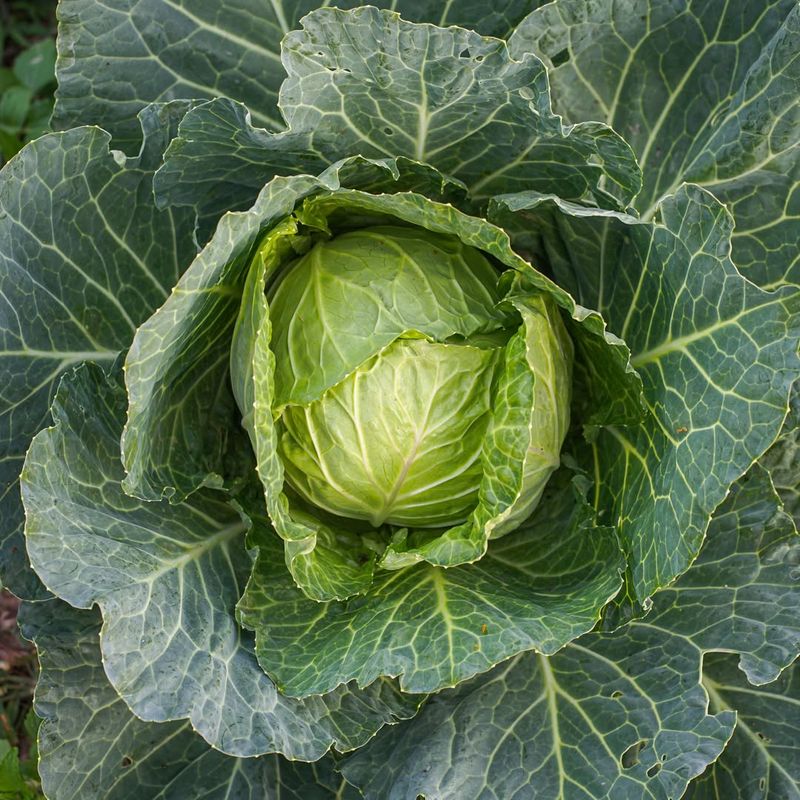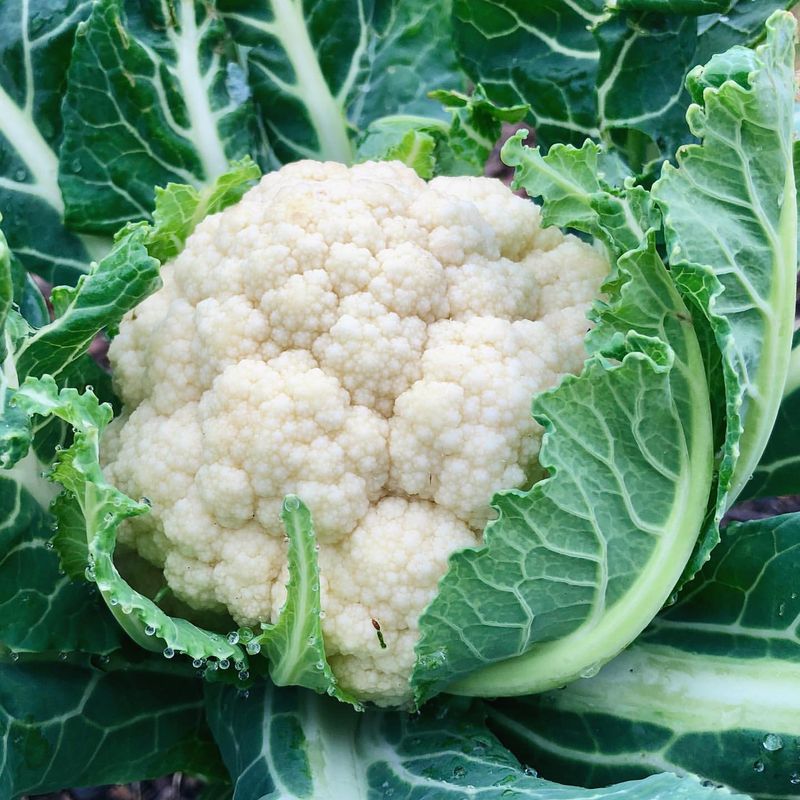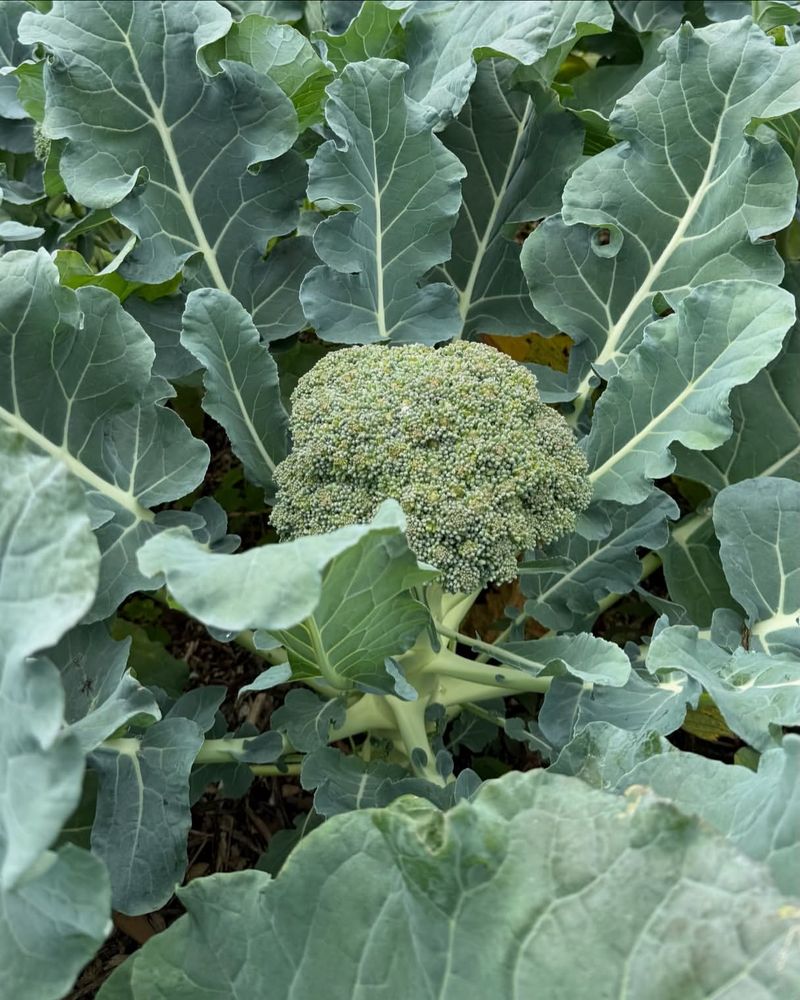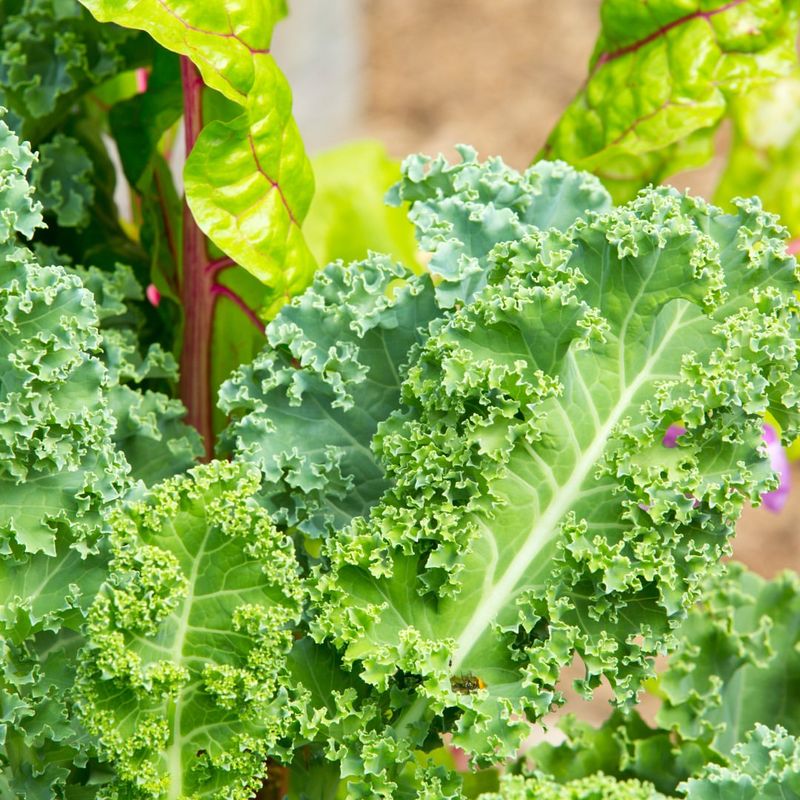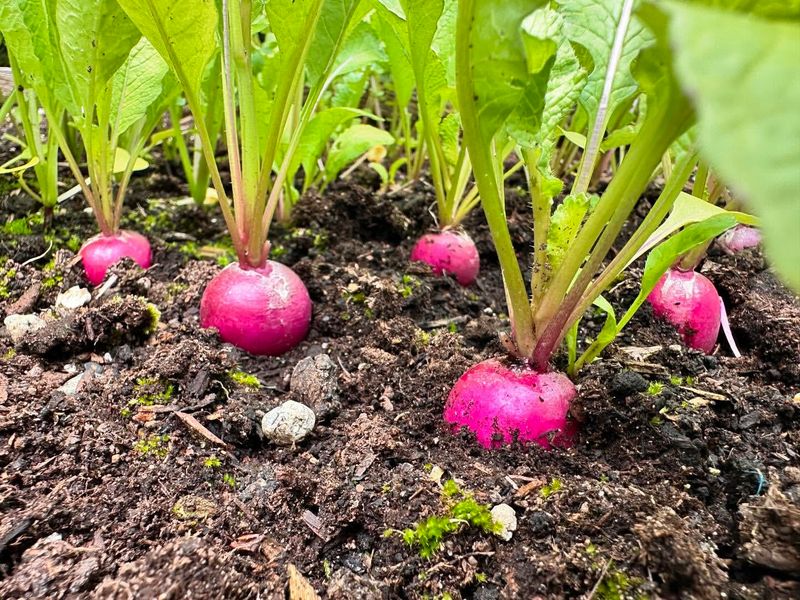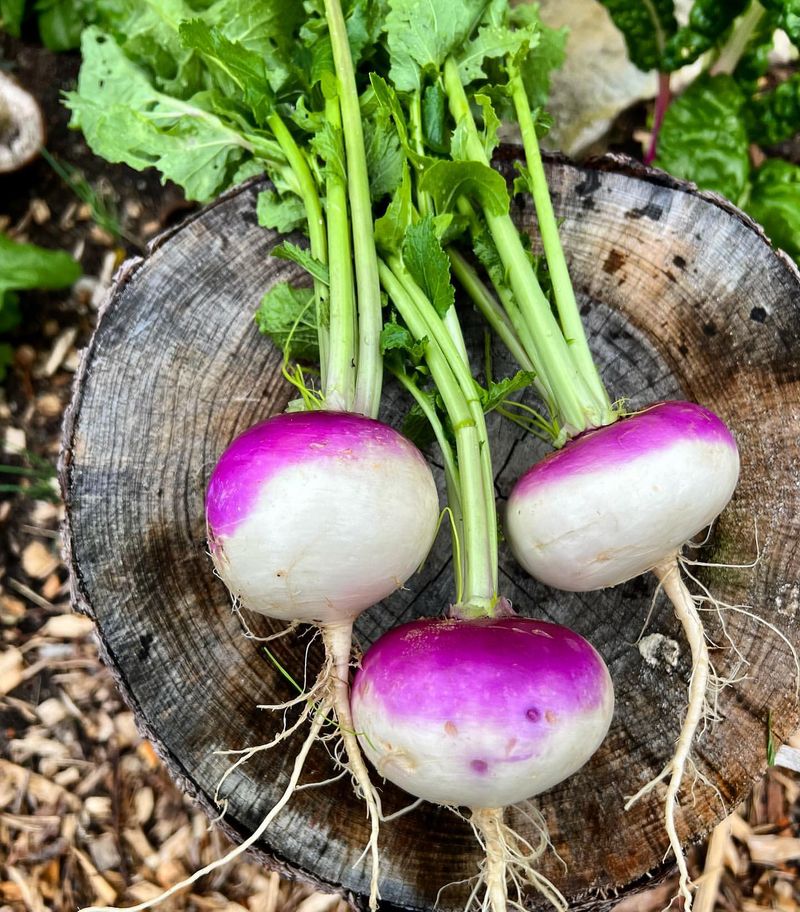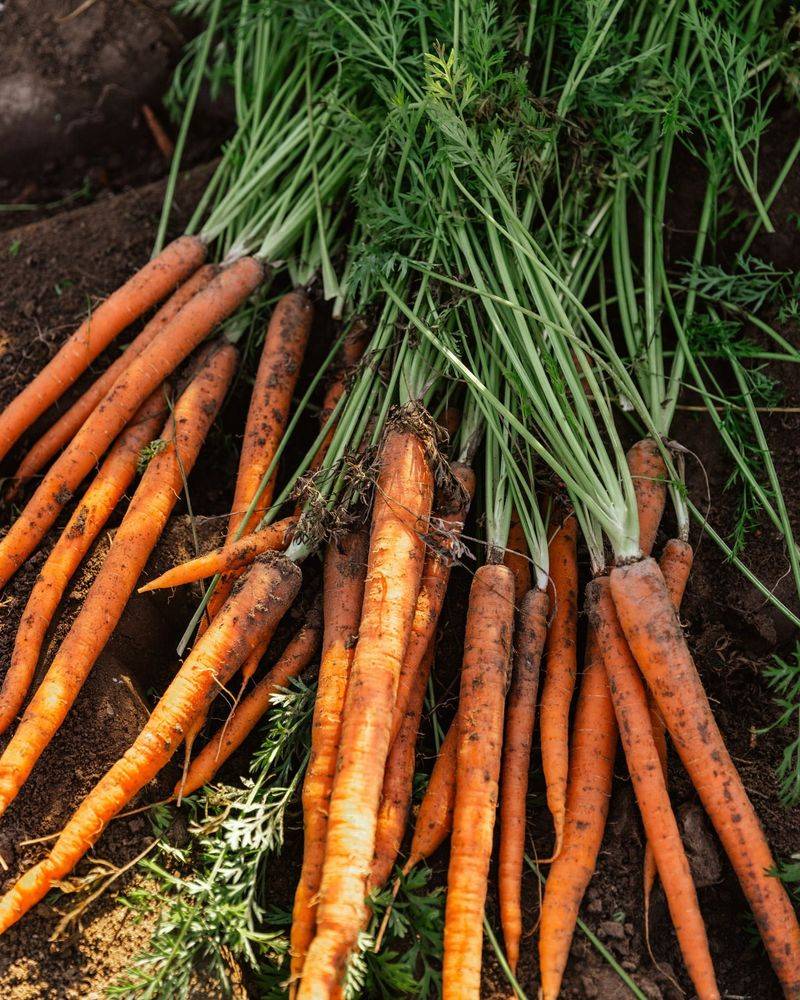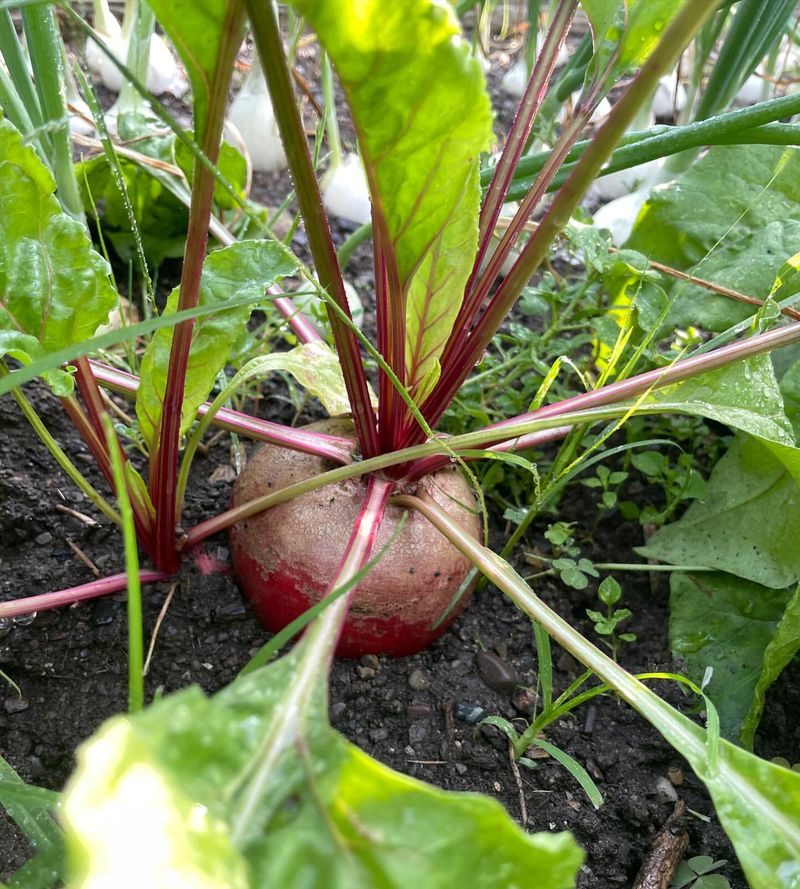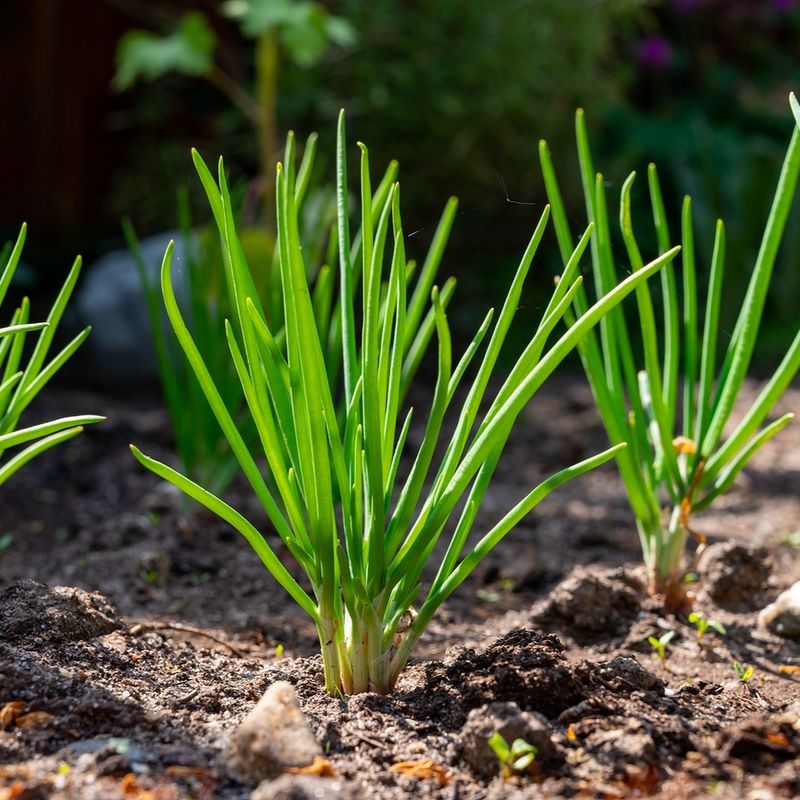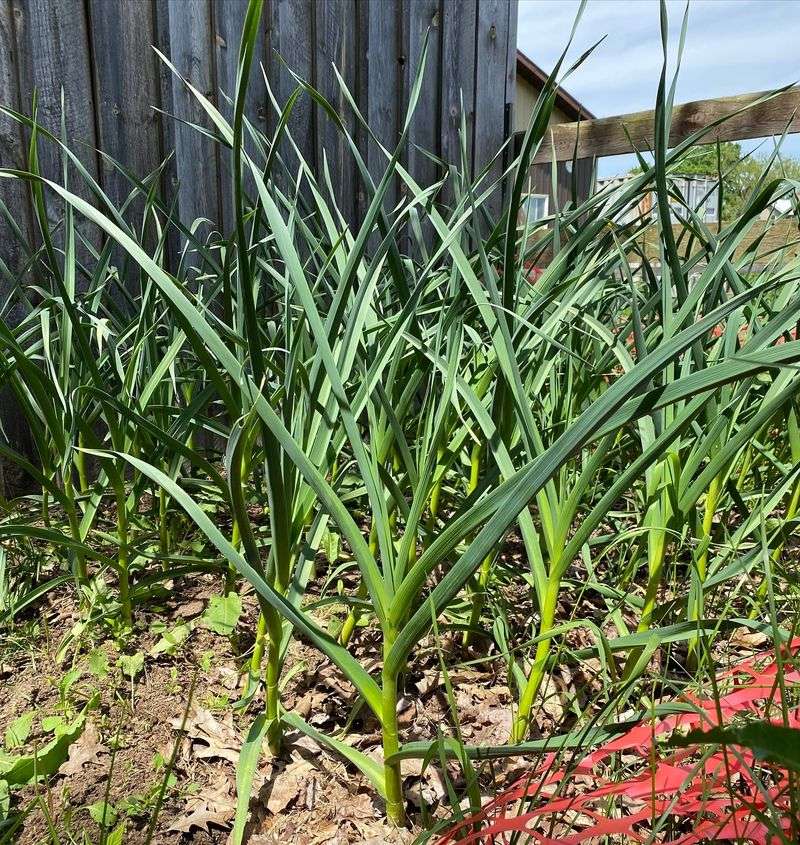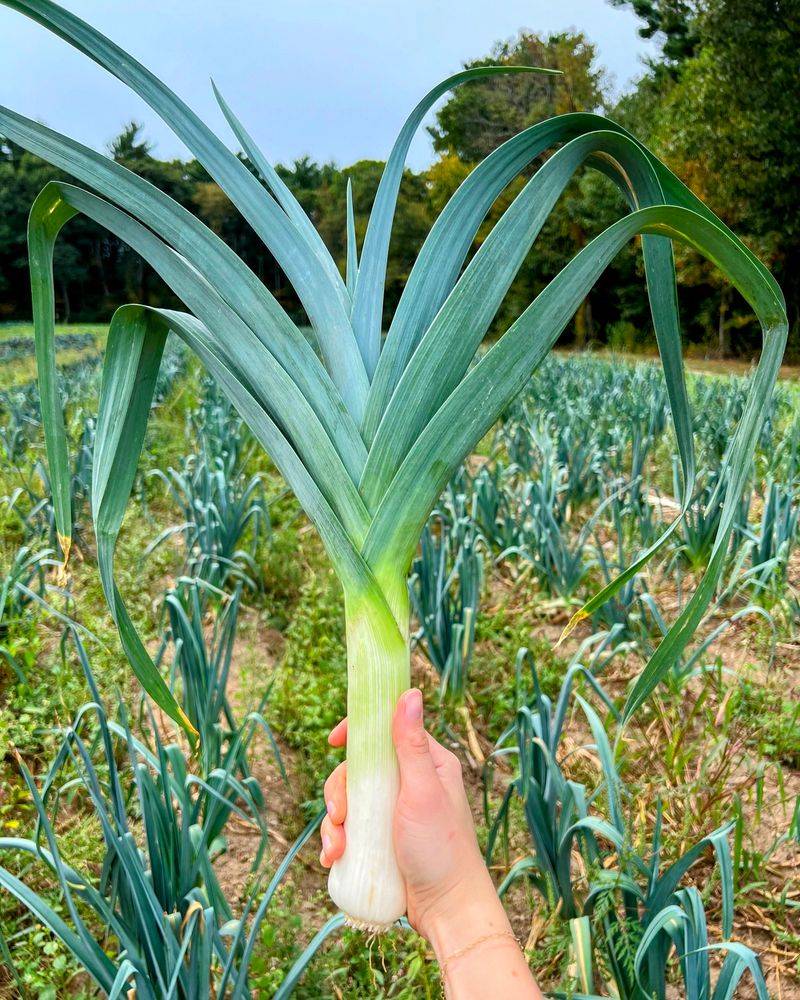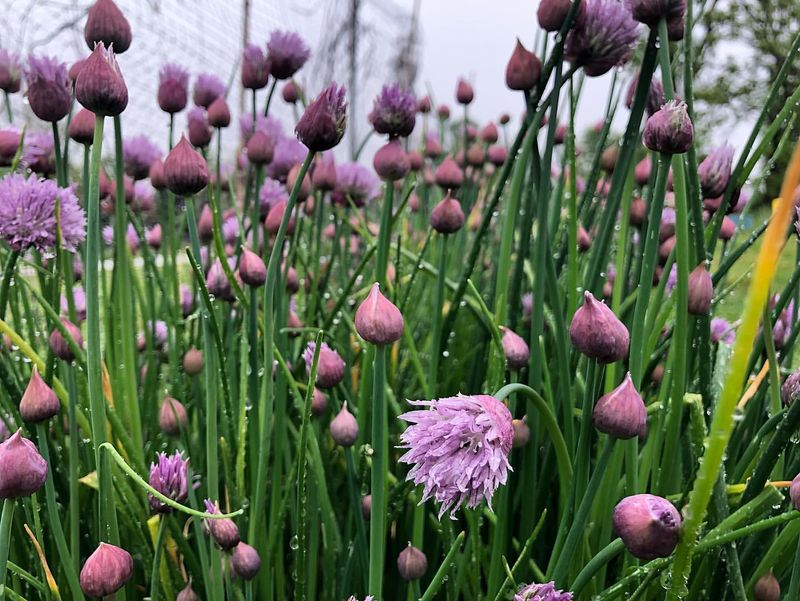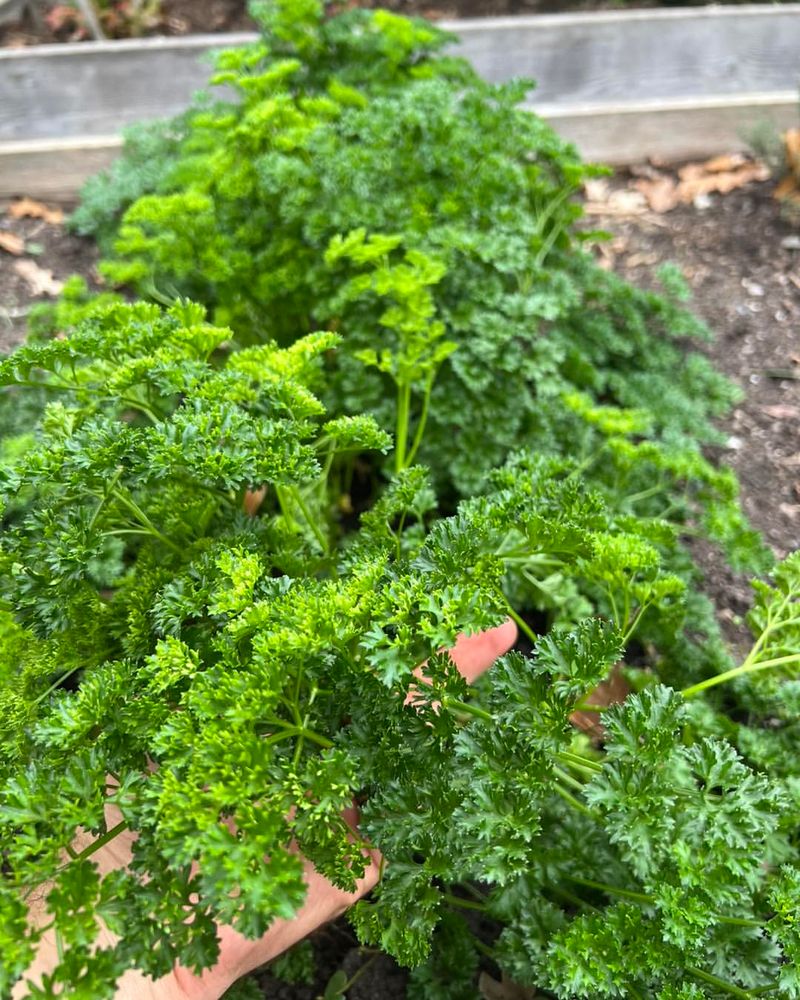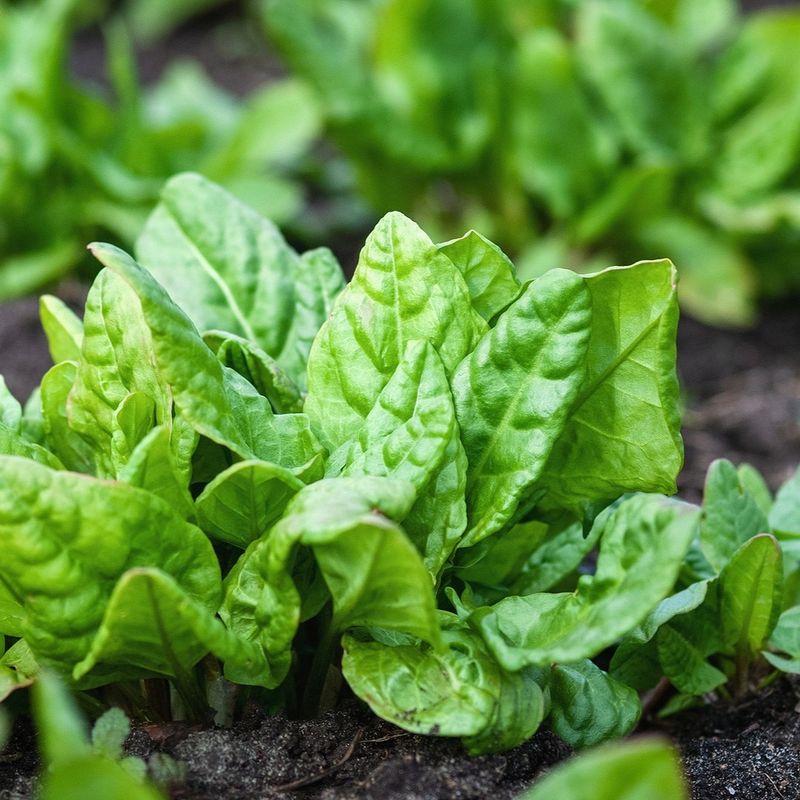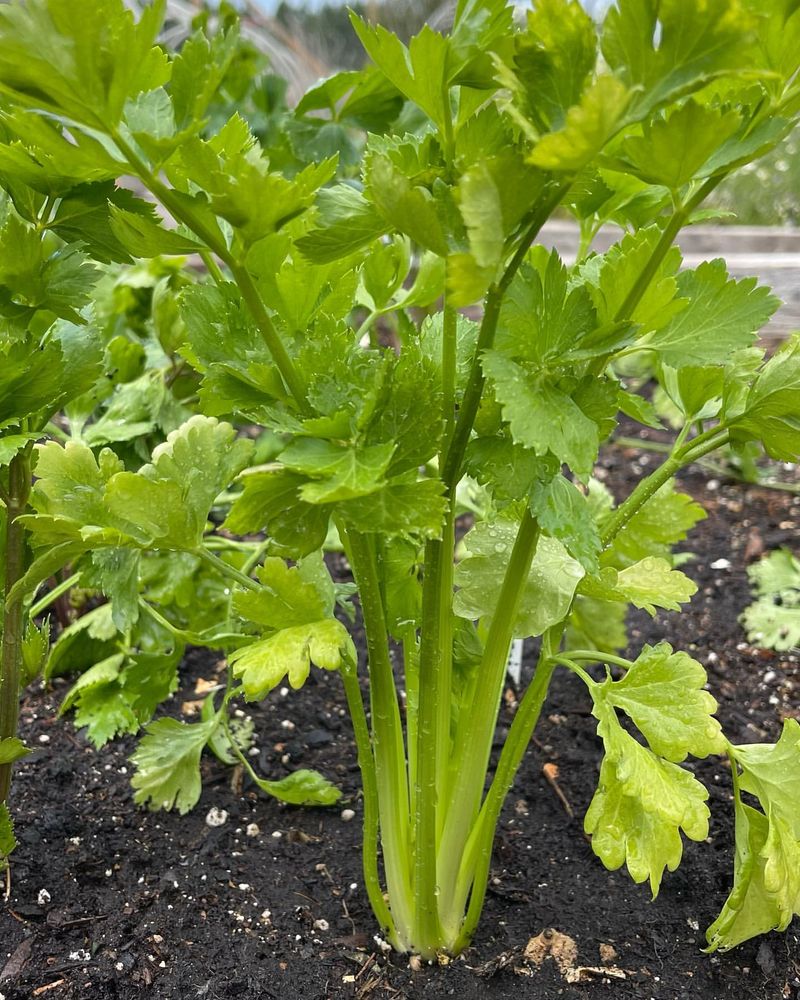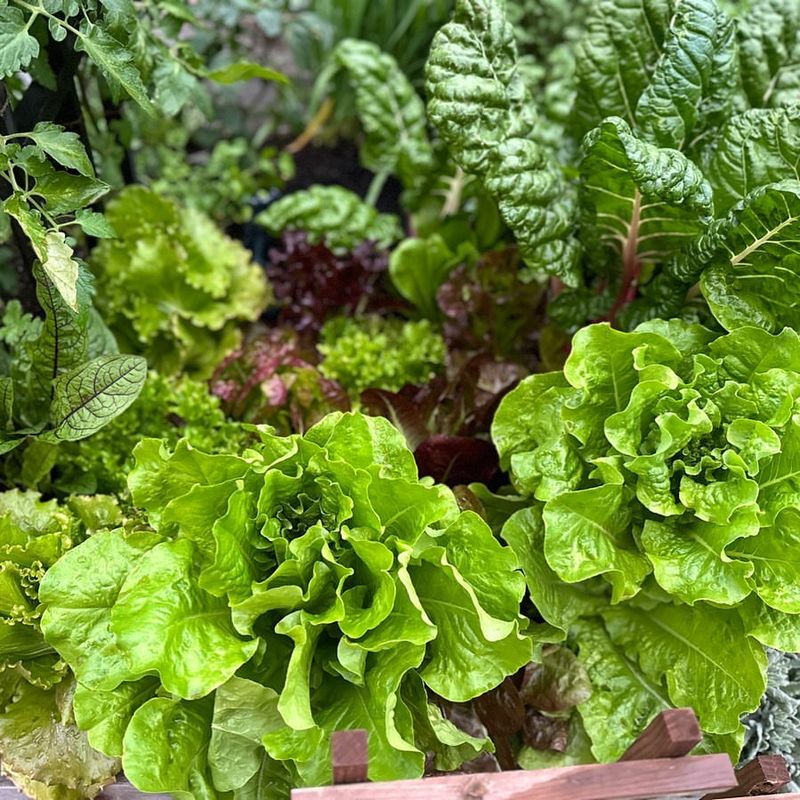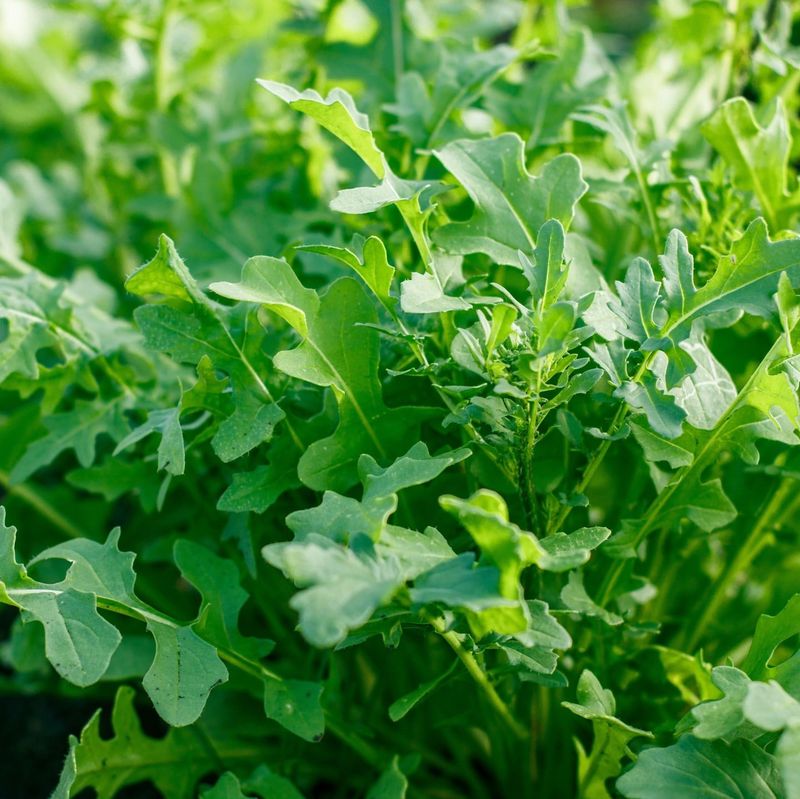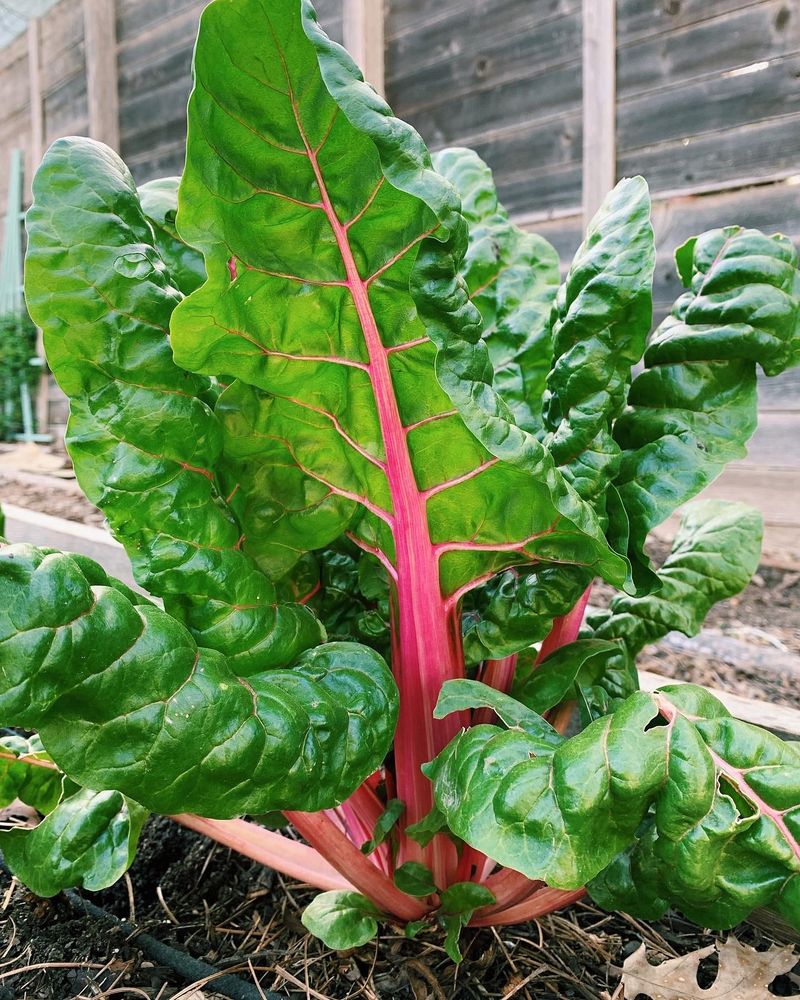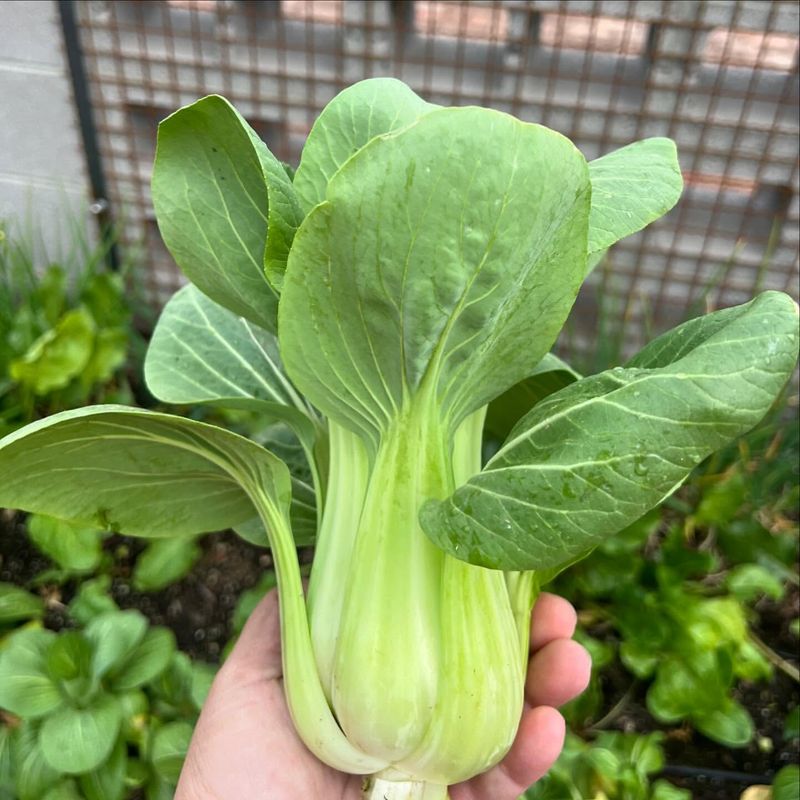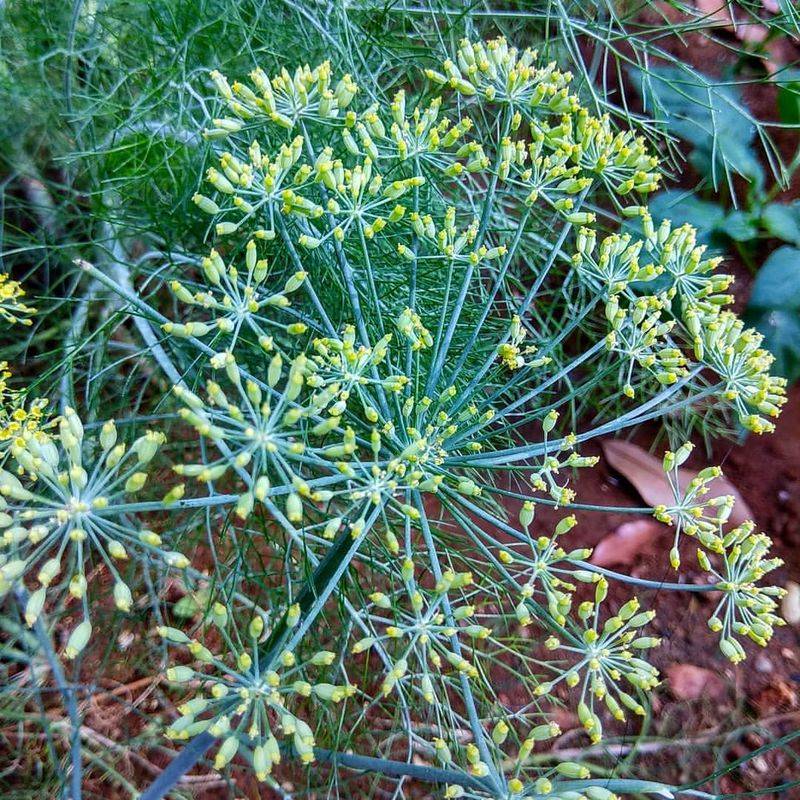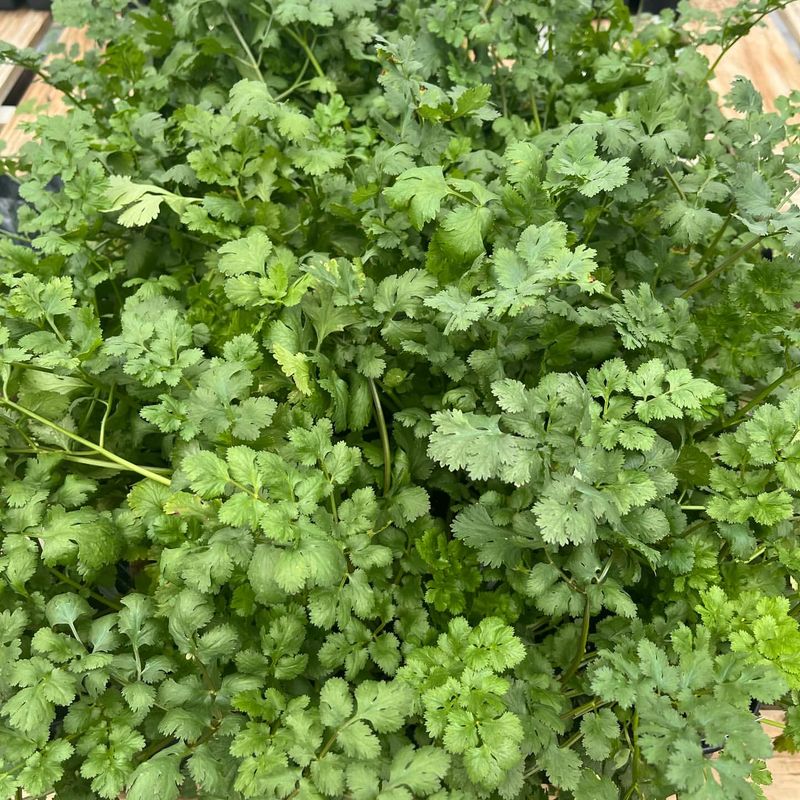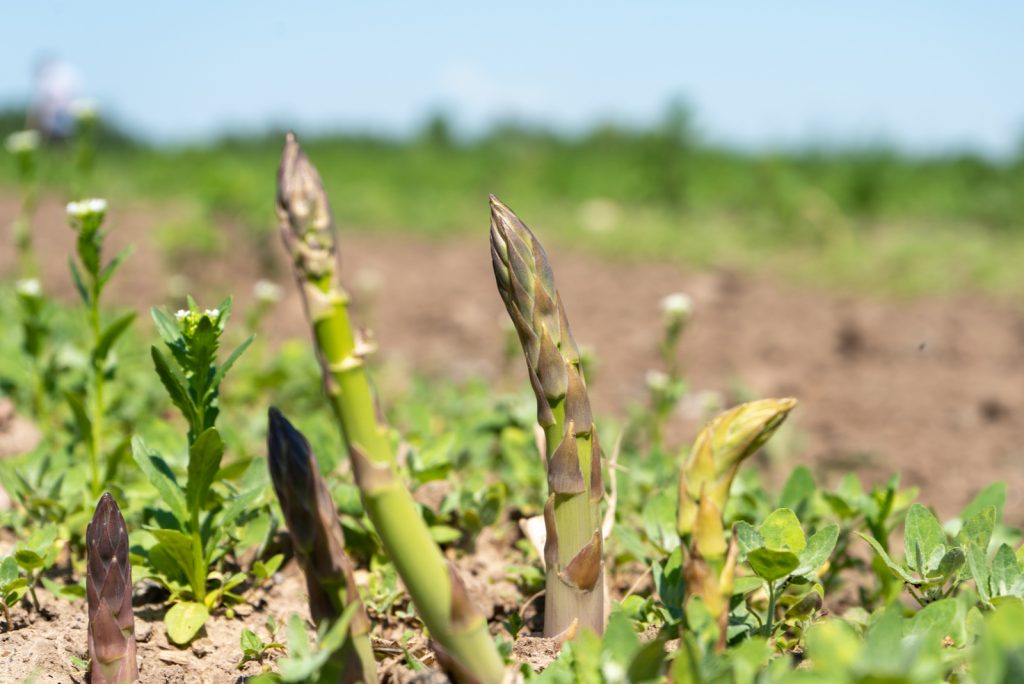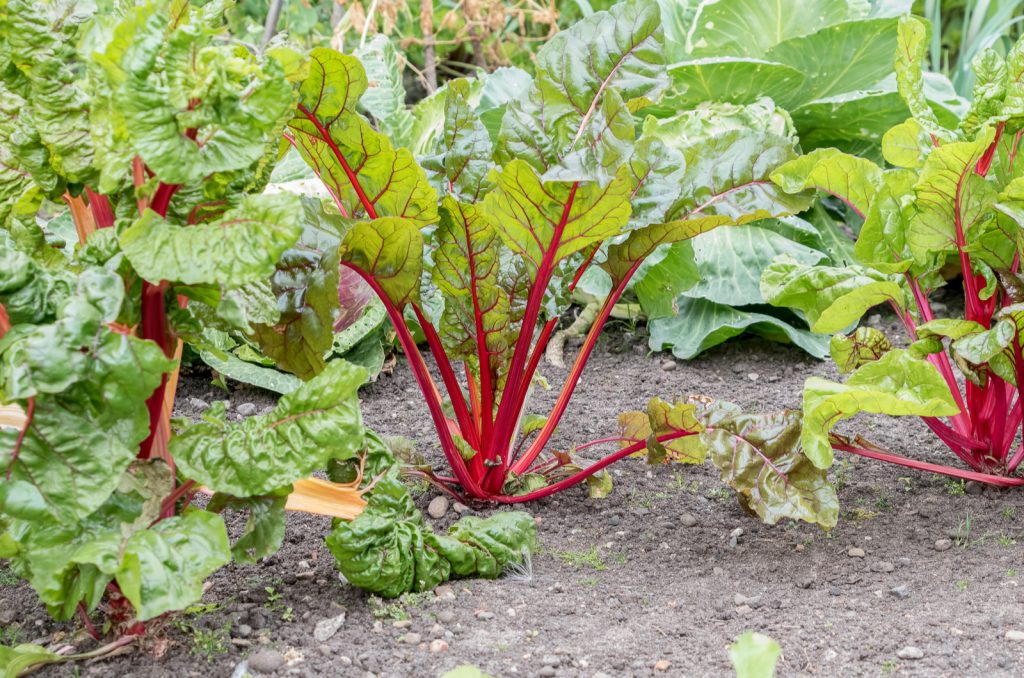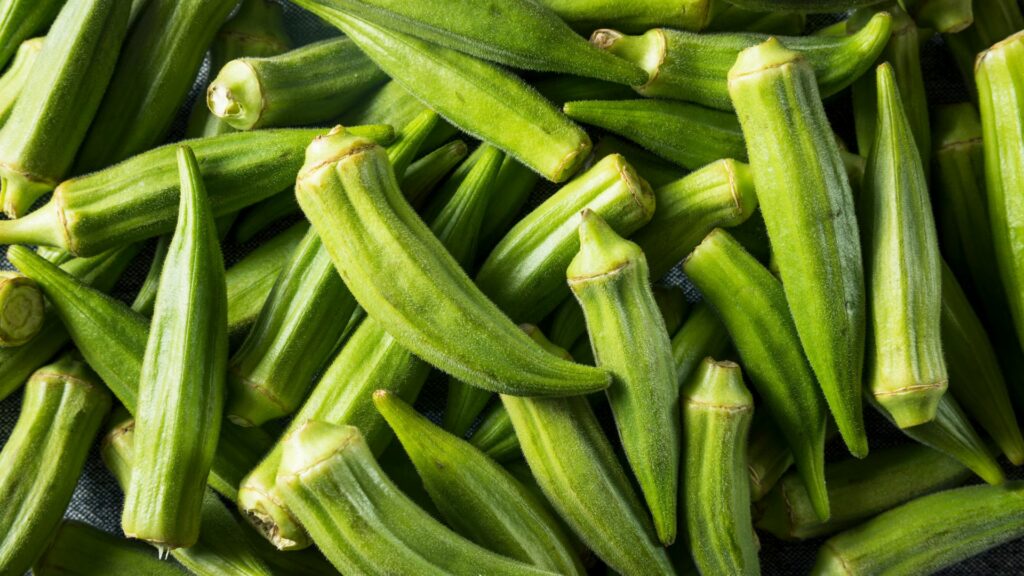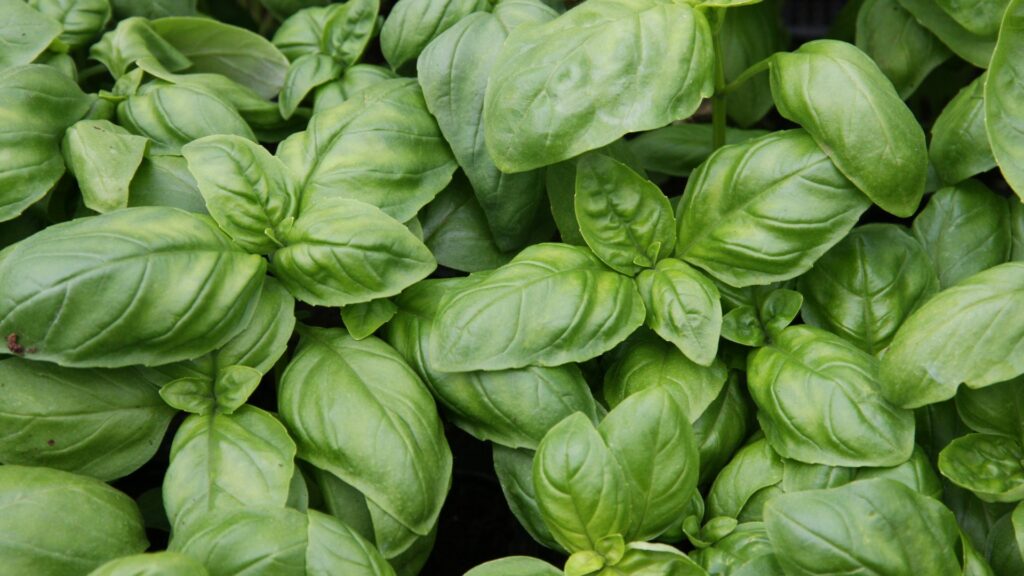Growing corn can be such a rewarding experience—there’s nothing like picking fresh ears straight from your own garden. But I’ve learned the hard way that what you plant nearby can make or break your harvest. Some vegetables compete too aggressively, bring in pests, or just don’t play nice with corn at all.
After a few seasons of tryouts (and more than a few stunted stalks), I’ve put together a list of 34 vegetables you’ll want to keep at a distance from your corn patch. Each one comes with a little personality, plus tips to help you grow smarter, not harder.
So if you’re dreaming of tall, healthy corn swaying in the breeze, this guide will help you dodge the troublemakers and grow your best crop yet.
1. Tomatoes
In the realm of gardening, proximity can make all the difference. Tomato plants, for example, may not be the best neighbors for your corn due to their tendency to attract similar pests like the corn earworm. This rivalry for resources can stunt their growth, leading to less-than-ideal yields.
To keep your corn thriving, consider placing your tomato plants in a separate bed. Ensure they have ample space to breathe and grow without encroaching on your corn’s territory. This simple adjustment can lead to more fruitful results for both crops.
2. Potatoes
Gardeners often discover that some plants just don’t get along. Potatoes are among those that can create a hostile environment for corn, mainly because they both attract similar pests and diseases. This competition can be detrimental to your corn’s health and productivity.
For a harmonious garden, plant your potatoes far from your corn. Ensure each has its dedicated space, rich in nutrients, to avoid any unnecessary conflicts. Allow both to thrive independently for a more rewarding harvest.
3. Peppers
For those aiming to maximize their corn’s potential, steering clear of certain neighbors is key. Peppers, with their vibrant colors and spicy allure, might seem harmless but they tend to attract aphids, which can quickly migrate to nearby corn plants.
To safeguard your crops, plant peppers at a distance. Maintain a buffer zone between them and your corn to reduce pest transfer. By doing so, you’ll foster a healthier environment for both vegetables to flourish.
4. Eggplants
Creating the perfect garden often involves some strategic planning. Eggplants, while delightful in many dishes, can present challenges when planted near corn, due to their susceptibility to similar pests like the flea beetle.
To ensure both crops prosper, keep eggplants and corn at a respectful distance. This separation minimizes pest issues and promotes healthier growth for both plants. By planning ahead, you can enjoy a bountiful harvest from each.
5. Cucumbers
Sometimes, it’s about knowing which plants to avoid pairing. Cucumbers might seem innocuous, but their sprawling vines can choke out young corn by competing for sunlight and space.
To maintain harmony, plant cucumbers in a separate area of your garden. Ensure they have plenty of room to spread without encroaching on your corn’s growing space. This approach helps each plant achieve its full potential.
6. Zucchini
Understanding the dynamics of your garden can lead to better results. Zucchini’s large leaves can overshadow corn, blocking essential sunlight and impeding growth.
By planting zucchini away from corn, you ensure that both receive the light they need. This separation allows each to thrive without hindrance, leading to a more successful harvest.
7. Squash
A garden’s harmony hinges on the right combination of plants. Squash, while delicious, can overshadow corn with their broad leaves, which can lead to competition for sunlight and nutrients.
To foster a balanced garden, consider planting squash at a distance from corn. This ensures each crop has the space and resources it needs to flourish. With thoughtful placement, your harvest will be more abundant.
8. Melons
Crafting a productive garden involves careful positioning of crops. Melons, with their sprawling nature, can interrupt corn’s growth by competing for sunlight and space.
Position melons away from corn to avoid interference. Allow them to grow freely in their own section of the garden. This spatial consideration benefits the development of both crops.
9. Pumpkins
A fruitful garden often requires strategic distancing of certain plants. Pumpkins, with their expansive vines, can encroach upon corn’s territory, leading to a struggle for light and nutrients.
To keep your garden balanced, plant pumpkins away from corn. By allowing each to grow in its own space, you’ll enhance the success of your harvest.
10. Cabbage
Enjoying a rich harvest often means knowing which plants to separate. Cabbage can introduce competition to corn by attracting similar pests such as cabbage loopers.
Plant cabbage in a different section to reduce pest issues. Ensuring they aren’t neighbors helps both plants stay healthy and productive. Thoughtful spacing can lead to a more rewarding yield.
11. Cauliflower
A thriving garden is all about making smart choices. Cauliflower, while a nutritious addition to meals, can pose challenges to corn due to overlapping pest attractions.
For the best results, keep cauliflower away from corn. Assign each plant its unique space to grow without interference, promoting a bountiful harvest for both.
12. Broccoli
Successful gardening involves avoiding certain plant pairings. Broccoli, known for its dense heads, can draw pests like cabbage worms to corn, creating a troublesome situation.
For optimal growth, ensure broccoli and corn are separated. This strategy reduces pest problems and supports the development of both plants. A little distance goes a long way in gardening.
13. Kale
The secret to a lush garden sometimes lies in plant placement. Kale, while packed with nutrients, can invite pests that also target corn.
To safeguard your crops, plant kale away from corn. This separation minimizes pest crossover, leading to healthier plants and a more abundant harvest.
14. Radishes
Harmony in the garden often requires distance. Radishes, despite their small size, can attract root maggots, which may also affect corn.
To keep your garden flourishing, consider planting radishes separately. This distance reduces pest issues, ensuring both radishes and corn grow healthily.
15. Turnips
A well-planned garden avoids certain combinations. Turnips, though unassuming, can foster pests that target both their roots and corn.
To promote healthy growth, plant turnips away from corn. This separation limits pest problems, allowing both crops to prosper without interference.
16. Carrots
A productive garden relies on strategic plant placement. Carrots, with their sweet roots, can attract pests like carrot flies, which may also disrupt nearby corn.
To maintain a thriving garden, plant carrots in a separate location. This decision reduces pest-related challenges and supports healthier growth for all plants.
17. Beets
Creating a flourishing garden sometimes requires keeping certain plants apart. Beets, with their earthy sweetness, can attract pests that also affect corn.
To ensure the best results, plant beets away from corn. This separation helps minimize pest issues, allowing each crop to thrive and produce its best yield.
18. Onions
A garden’s success often depends on thoughtful plant arrangements. Onions, while potent in flavor, can compete with corn for nutrients, affecting their growth.
To foster both crops, consider planting onions at a distance from corn. This planning helps ensure each plant receives the resources it requires to thrive.
19. Garlic
Maximizing a garden’s potential sometimes involves keeping certain crops apart. Garlic, strong in both aroma and flavor, can restrict corn’s growth by competing for essential nutrients.
For a successful harvest, plant garlic away from corn. This separation allows each plant to access the resources it needs to grow robustly.
20. Leeks
A well-organized garden avoids certain plant pairings to thrive. Leeks share similarities with onions and garlic, all of which compete with corn for nutrients.
To maintain a balanced garden, plant leeks away from corn. This strategy supports healthier growth and a more abundant harvest for all involved.
21. Chives
Effective gardening sometimes means choosing the right plant combinations. Chives, with their delicate flavor, can compete with corn for essential nutrients.
To ensure both crops flourish, consider planting chives at a distance from corn. This thoughtful arrangement helps each plant achieve its full potential.
22. Parsley
Success in gardening often hinges on plant placement. Parsley, while a wonderful herb, can compete with corn for soil nutrients and space.
To enhance growth, plant parsley separately from corn. This distance allows each plant to access the resources it needs, fostering a more productive garden.
23. Spinach
Productive gardening sometimes entails keeping certain plants apart. Spinach, with its lush leaves, can compete with corn for sunlight and nutrients.
To optimize your garden, plant spinach away from corn. This separation helps each crop to thrive without hindrance, leading to a more successful harvest.
24. Celery
Gardening success can depend on keeping certain plants at a distance. Celery, though crisp and refreshing, can overshadow corn, restricting its access to sunlight.
For the best results, plant celery away from corn. This separation ensures both crops receive the light and nutrients they need to thrive.
25. Lettuce
Achieving a bountiful harvest sometimes involves strategic plant placement. Lettuce, with its wide leaves, can block sunlight from reaching corn, hindering its growth.
To promote healthy crops, plant lettuce away from corn. This simple decision ensures both receive the resources they need to flourish.
26. Arugula
Creating a harmonious garden involves careful crop placement. Arugula’s fast growth can compete with corn for soil nutrients and space.
For the best yields, plant arugula away from corn. This thoughtful arrangement supports the development of both plants, leading to a more abundant harvest.
27. Swiss Chard
Gardening wisdom sometimes involves knowing which plants to separate. Swiss chard, with its colorful stems and large leaves, can overshadow young corn plants.
To allow both crops to thrive, plant Swiss chard apart from corn. This strategy optimizes light exposure and nutrient access for both, enhancing your garden’s productivity.
28. Bok Choy
An abundant garden often requires strategic plant placement. Bok choy, with its robust growth, can compete with corn for essential nutrients.
To ensure that both crops grow healthily, plant bok choy away from corn. This separation reduces competition and supports a more balanced garden ecosystem.
29. Fennel
Gardeners know that some plants don’t mix well. Fennel, with its aromatic fronds, can inhibit corn growth by releasing substances that suppress nearby plants.
For a thriving garden, keep fennel far from corn. This distance ensures both plants can grow healthily, unimpeded by chemical interference.
30. Cilantro
A lush garden is often about careful planning. Cilantro, though flavorful, can attract pests that pose a threat to corn.
To protect your crops, plant cilantro in a separate area. This separation minimizes pest issues, allowing both cilantro and corn to flourish independently.
31. Asparagus
Smart garden planning is key to a successful harvest. Asparagus, while a perennial favorite, has deep root systems that can interfere with corn’s more shallow roots, leading to nutrient competition that may stunt both crops.
To encourage optimal growth, plant asparagus in a dedicated bed far from your corn. This separation allows both plants to develop without fighting over resources, supporting a healthier, more productive garden in the long run.
32. Rhubarb
In a thriving garden, some space can go a long way. Rhubarb, known for its tart stalks, can release compounds into the soil that may inhibit the growth of nearby plants, including corn.
To avoid this issue, grow rhubarb well away from your corn patch. Giving each plant its own area ensures they both flourish without interference, leading to a more balanced and rewarding harvest
33. Okra
When planning your garden, even a Southern staple like okra deserves a second look. While it thrives in warm climates like corn does, okra can create dense shade with its tall, leafy stalks, blocking the light young corn plants need. Plus, both crops are prone to aphids, inviting a larger infestation when grown together.
To help your garden flourish, give okra its own space. Planting it away from corn reduces competition for light and lessens the chance of shared pest problems. This thoughtful spacing can boost productivity on both fronts.
34. Basil
Basil may be a favorite in the kitchen, but in the garden, it’s not always the best neighbor. Though often praised for its pest-repelling properties, basil can compete with corn for soil nutrients—especially in smaller gardens with limited space. Its shallow roots can also interfere with corn’s access to water in dense plantings.
To keep both plants happy, grow basil in a separate herb section. This separation supports stronger, more vigorous growth for your corn and ensures your basil stays lush and flavorful for your next culinary creation.

